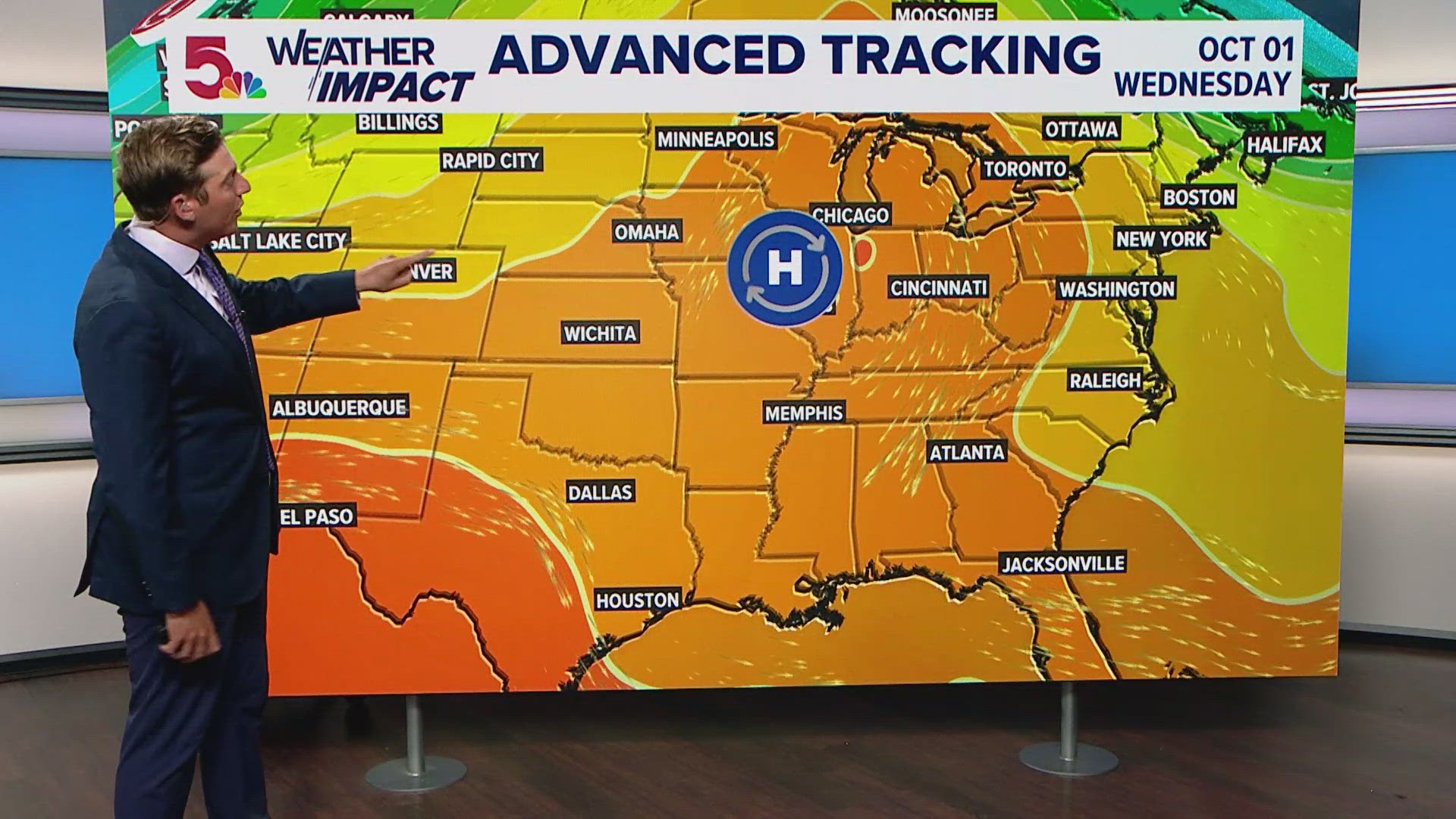Report on the Legal Challenge to Red Wolf Conservation Status and its Alignment with Sustainable Development Goals
Introduction
A legal challenge has been initiated by the Center for Biological Diversity against the U.S. Fish and Wildlife Service (FWS) concerning the management classification of the world’s only wild red wolf population. This report analyzes the legal proceedings, the conservation context, and the significant implications for achieving United Nations Sustainable Development Goals (SDGs), particularly SDG 15 (Life on Land) and SDG 16 (Peace, Justice and Strong Institutions).
Conservation Status and Program Background
Historical Context of the Recovery Program
The FWS established an experimental population of red wolves nearly four decades ago to prevent the species’ extinction. This initiative, based in northeastern North Carolina, was foundational to modern conservation efforts but designated the population as “nonessential experimental.”
- 1966: Red wolves were listed as a species threatened with extinction.
- Circa 1986: The FWS released four pairs into the Alligator River National Wildlife Refuge under the “nonessential” designation.
- Present: This remains the only known wild population of red wolves globally, with an estimated 18 collared individuals remaining in the five-county recovery area.
Threats to Survival and Connection to SDG 15
The red wolf population faces critical threats that directly contravene the objectives of SDG 15, which calls for urgent action to halt biodiversity loss and protect threatened species.
- Mortality from Human Activity: Vehicle strikes and illegal gunshots are primary causes of death, highlighting a failure to meet SDG Target 15.7 (Take urgent action to end poaching and trafficking of protected species).
- Population Viability: With a critically low number of individuals, the species is on the verge of extinction in the wild, making protective action essential to fulfilling SDG Target 15.5 (protect and prevent the extinction of threatened species).
Legal Challenge and Institutional Accountability (SDG 16)
The Lawsuit’s Core Arguments
The Center for Biological Diversity’s lawsuit contends that the FWS’s refusal to upgrade the red wolf’s status is unlawful and undermines conservation efforts. The case invokes SDG 16 (Peace, Justice and Strong Institutions) by using the legal system to hold a public institution accountable (Target 16.6) and promote the rule of law in environmental governance (Target 16.3).
- The plaintiff argues the “nonessential” classification is outdated and does not reflect the population’s outsized importance to the species’ survival.
- The FWS is accused of failing to use the “best available science” in its decision-making, as mandated by its duties.
- A petition to reclassify the population to “essential” was filed in 2016 and denied by the FWS in January 2023.
Implications of Reclassification for SDG 15
Changing the red wolf’s classification from “nonessential” to “essential” would trigger enhanced protective measures, directly advancing the goals of SDG 15.
- Enhanced Protections: An “essential” status would provide stronger legal safeguards against threats like poaching, aligning with SDG Target 15.7.
- Critical Habitat Designation: The reclassification would allow for the designation of critical habitat, a key tool for achieving SDG Target 15.5 by reducing the degradation of natural habitats.
- Enforcement Alignment: The conservation group is also demanding that FWS enforcement codes be updated to reflect a 2018 court ruling that restricted the killing of red wolves, thereby strengthening institutional frameworks for conservation.
Conclusion: The Intersection of Conservation Law and Global Goals
The legal battle over the red wolf’s status is a critical test of the United States’ commitment to the principles enshrined in the Endangered Species Act and, by extension, the global Sustainable Development Goals. The outcome will determine the future of a critically endangered species and serve as a precedent for the role of scientific evidence and institutional accountability in conservation. Successfully protecting the red wolf population requires a robust partnership between government agencies and civil society (SDG 17) and a firm commitment to upholding legal and scientific standards to achieve SDG 15 (Life on Land) and SDG 16 (Peace, Justice and Strong Institutions).
Analysis of Sustainable Development Goals in the Article
Which SDGs are addressed or connected to the issues highlighted in the article?
- SDG 15: Life on Land – This goal is central to the article, which focuses on the conservation of the red wolf, a critically endangered terrestrial species, and the protection of its habitat.
- SDG 16: Peace, Justice and Strong Institutions – This goal is relevant due to the legal challenge discussed in the article, which involves a conservation group using the justice system to hold a government agency accountable for its decisions and adherence to environmental laws.
What specific targets under those SDGs can be identified based on the article’s content?
-
SDG 15: Life on Land
- Target 15.5: “Take urgent and significant action to reduce the degradation of natural habitats, halt the loss of biodiversity and, by 2020, protect and prevent the extinction of threatened species.”
Explanation: The entire article is about the effort to “save the eastern red wolf from extinction.” The legal case aims to upgrade the wolves’ management designation to “essential” to provide more protective measures and prevent the disappearance of the “only known wild population of red wolves in the world.” - Target 15.7: “Take urgent action to end poaching and trafficking of protected species of flora and fauna and address both demand and supply of illegal wildlife products.”
Explanation: The article explicitly identifies “mortality by … gunshots” as an “increasing challenge to the wolves’ survival.” The conservation group argues that greater protections would result in “lower poaching pressure,” directly addressing the issue of illegal killing of a protected species.
- Target 15.5: “Take urgent and significant action to reduce the degradation of natural habitats, halt the loss of biodiversity and, by 2020, protect and prevent the extinction of threatened species.”
-
SDG 16: Peace, Justice and Strong Institutions
- Target 16.3: “Promote the rule of law at the national and international levels and ensure equal access to justice for all.”
Explanation: The Center for Biological Diversity has filed a “federal court case” to challenge the U.S. Fish and Wildlife Service. This action represents an effort to use the legal system to ensure that the agency’s actions comply with the law, specifically the Endangered Species Act. The article also notes a request to change the enforcement code to match a “2018 court ruling,” highlighting the importance of enforcing judicial decisions. - Target 16.6: “Develop effective, accountable and transparent institutions at all levels.”
Explanation: The lawsuit contends that the “Wildlife Service acted unlawfully” and is “violating its duty to consider the best available science.” This challenges the effectiveness and accountability of the agency. The article mentions the agency’s position as, “‘We’re not going to revisit the essentiality determination, because we don’t have to,'” which the lawsuit implicitly frames as a failure of institutional accountability.
- Target 16.3: “Promote the rule of law at the national and international levels and ensure equal access to justice for all.”
Are there any indicators mentioned or implied in the article that can be used to measure progress towards the identified targets?
-
SDG 15: Life on Land
- Indicator for Target 15.5: The population size of the species.
Explanation: The article provides a specific number: “there are believed to be 18 known red wolves surviving in the program’s five-county recovery area.” Tracking this number over time is a direct measure of progress toward preventing extinction. The conservation status (“critically endangered,” “nonessential”) is also a key indicator. - Indicator for Target 15.7: The number of animals killed by poaching.
Explanation: The article identifies “mortality by vehicle strikes and gunshots” as a primary threat. A reduction in the number of deaths from gunshots would be a direct indicator of success in combating poaching.
- Indicator for Target 15.5: The population size of the species.
-
SDG 16: Peace, Justice and Strong Institutions
- Indicator for Target 16.3 & 16.6: The outcome of legal challenges and agency compliance with judicial rulings.
Explanation: The success or failure of the “federal court case” serves as an indicator of whether the justice system can effectively hold institutions accountable. Furthermore, the article points out that the agency’s enforcement code does not “match a 2018 court ruling,” which is a direct, measurable indicator of institutional non-compliance with the rule of law.
- Indicator for Target 16.3 & 16.6: The outcome of legal challenges and agency compliance with judicial rulings.
SDGs, Targets, and Indicators Summary
| SDGs | Targets | Indicators |
|---|---|---|
| SDG 15: Life on Land | 15.5: Protect and prevent the extinction of threatened species. | The population count of wild red wolves (currently 18 known individuals). |
| 15.7: Take urgent action to end poaching and trafficking of protected species. | Number of red wolf mortalities caused by gunshots. | |
| SDG 16: Peace, Justice and Strong Institutions | 16.3: Promote the rule of law and ensure equal access to justice. | The filing and outcome of the federal court case; agency compliance with the 2018 court ruling. |
| 16.6: Develop effective, accountable and transparent institutions. | The agency’s response to the petition and its adherence to using the “best available science” in its decision-making. |
Source: coastalreview.org







